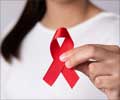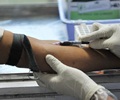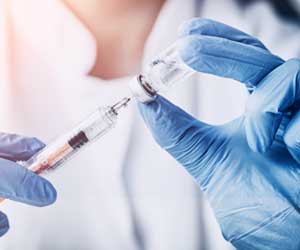Investigations find that giving daily antiretroviral syrup to breastfeeding infants or treating their HIV-infected mothers with highly active antiretroviral drugs is safe and effective.
Investigations find that giving daily antiretroviral syrup to breastfeeding infants or treating their HIV-infected mothers with highly active antiretroviral drugs is safe and effective.
This can prevent mother-to-child HIV transmission through breast milk, a study led by University of North Carolina at Chapel Hill investigators has found."This is an exciting development," said Charles van der Horst, M.D., a professor in the UNC School of Medicine and the study's lead investigator. "We may be able to spare mothers in the developing world a horrible choice by offering them an effective method for preventing transmission of HIV during breastfeeding."
These findings, from investigators at UNC-Chapel Hill, UNC Project-Malawi in Lilongwe, Malawi and the U.S. Centers for Disease Control and Prevention (CDC), were presented July 22 at the 5th International AIDS Society Conference on HIV Pathogenesis, Treatment and Prevention in Cape Town, South Africa (Abstract WELBC1 - Late Breaker C 16:30 - 17:30 Session Room 2).
Approximately 420,000 infants are infected with HIV annually, half through breast milk. HIV-infected women in resource-constrained areas face a terrible dilemma: provide the many health and nutritional benefits of breast milk but face a 20 percent chance of transmitting the virus to their baby or choose costly formula, which relies on an unsafe water supply and carries a higher risk of morbidity and mortality, and avoid transmitting HIV.
The Breastfeeding, Antiretrovirals and Nutrition (BAN) study is the only large-scale, randomized trial comparing infant prophylaxis or maternal treatment to an enhanced standard-of-care arm in the prevention of HIV transmission through breast milk. The study was conducted in Lilongwe, Malawi at a single site. Investigators randomly assigned at total of 2,367 mother-infant pairs to one of three treatment arms. For both the interventions, the probability of HIV-infection was significantly lower than in the enhanced control arm.
Of the randomized infants, 4.9 percent were found to be HIV positive at birth. Among infants who were HIV-free at one week old, 6.4 percent on the enhanced control arm were infected by 28 weeks, compared to 3.0 percent of the infants on the maternal treatment arm and 1.8 percent of the infants who received daily nevirapine syrup. Upon examining the probability of HIV infection or death by 28 weeks postpartum, 7.6 percent of the infants on the enhanced control arm were HIV-infected or died compared to 4.7 percent of the infants on the maternal treatment arm, and 2.9 percent of the infants on the infant prophylaxis arm.
Advertisement
Source-Eurekalert
ARU














